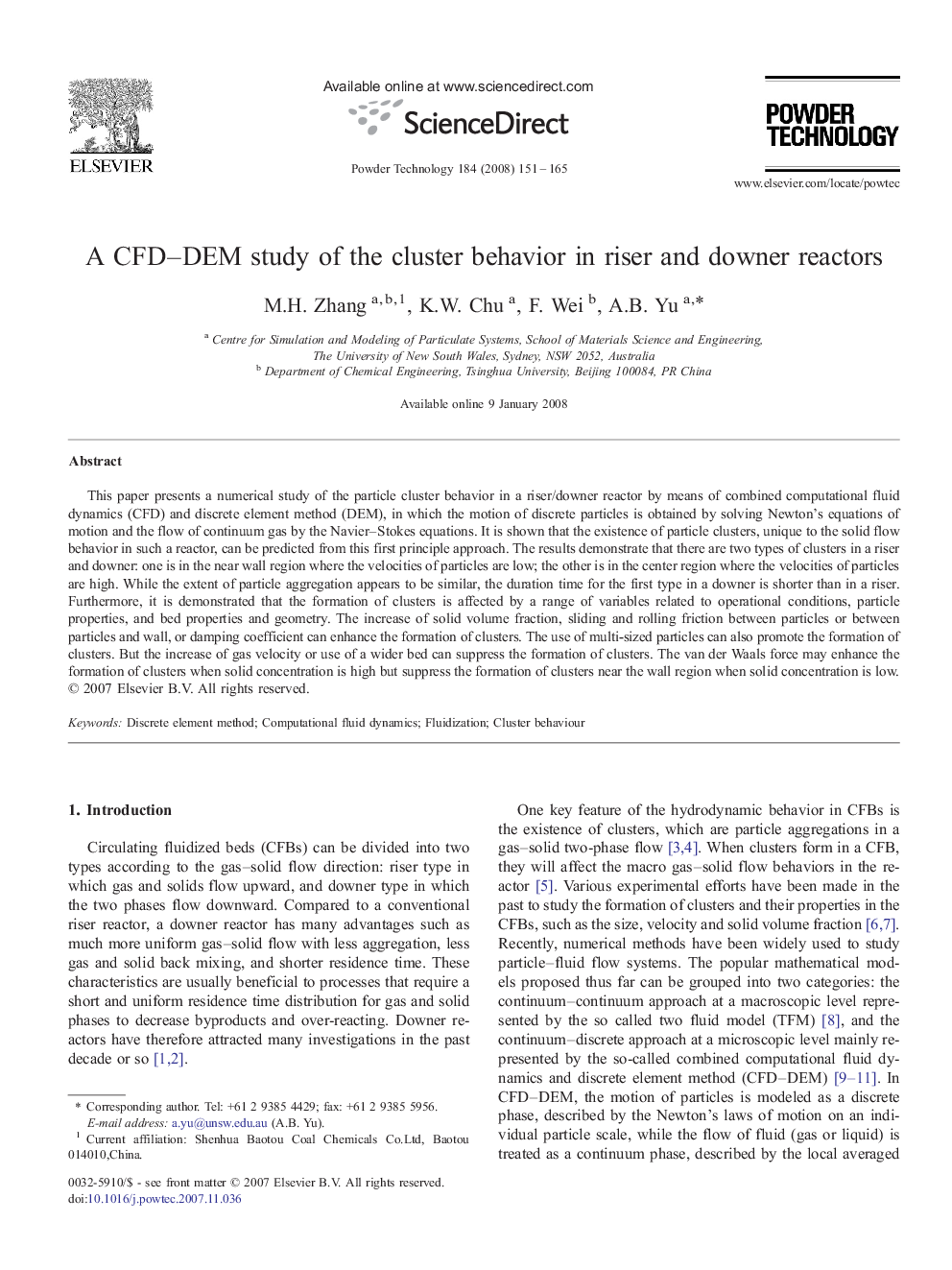| کد مقاله | کد نشریه | سال انتشار | مقاله انگلیسی | نسخه تمام متن |
|---|---|---|---|---|
| 238847 | 465778 | 2008 | 15 صفحه PDF | دانلود رایگان |

This paper presents a numerical study of the particle cluster behavior in a riser/downer reactor by means of combined computational fluid dynamics (CFD) and discrete element method (DEM), in which the motion of discrete particles is obtained by solving Newton's equations of motion and the flow of continuum gas by the Navier–Stokes equations. It is shown that the existence of particle clusters, unique to the solid flow behavior in such a reactor, can be predicted from this first principle approach. The results demonstrate that there are two types of clusters in a riser and downer: one is in the near wall region where the velocities of particles are low; the other is in the center region where the velocities of particles are high. While the extent of particle aggregation appears to be similar, the duration time for the first type in a downer is shorter than in a riser. Furthermore, it is demonstrated that the formation of clusters is affected by a range of variables related to operational conditions, particle properties, and bed properties and geometry. The increase of solid volume fraction, sliding and rolling friction between particles or between particles and wall, or damping coefficient can enhance the formation of clusters. The use of multi-sized particles can also promote the formation of clusters. But the increase of gas velocity or use of a wider bed can suppress the formation of clusters. The van der Waals force may enhance the formation of clusters when solid concentration is high but suppress the formation of clusters near the wall region when solid concentration is low.
Particle cluster behavior in a riser/downer reactor is numerically studied by means of CFD–DEM approach. Two types of clusters are identified, and their difference in a riser and downer is discussed. It is demonstrated that the formation of clusters is affected by a range of variables related to operational conditions, particle properties, and bed properties and geometryFigure optionsDownload as PowerPoint slide
Journal: Powder Technology - Volume 184, Issue 2, 16 May 2008, Pages 151–165